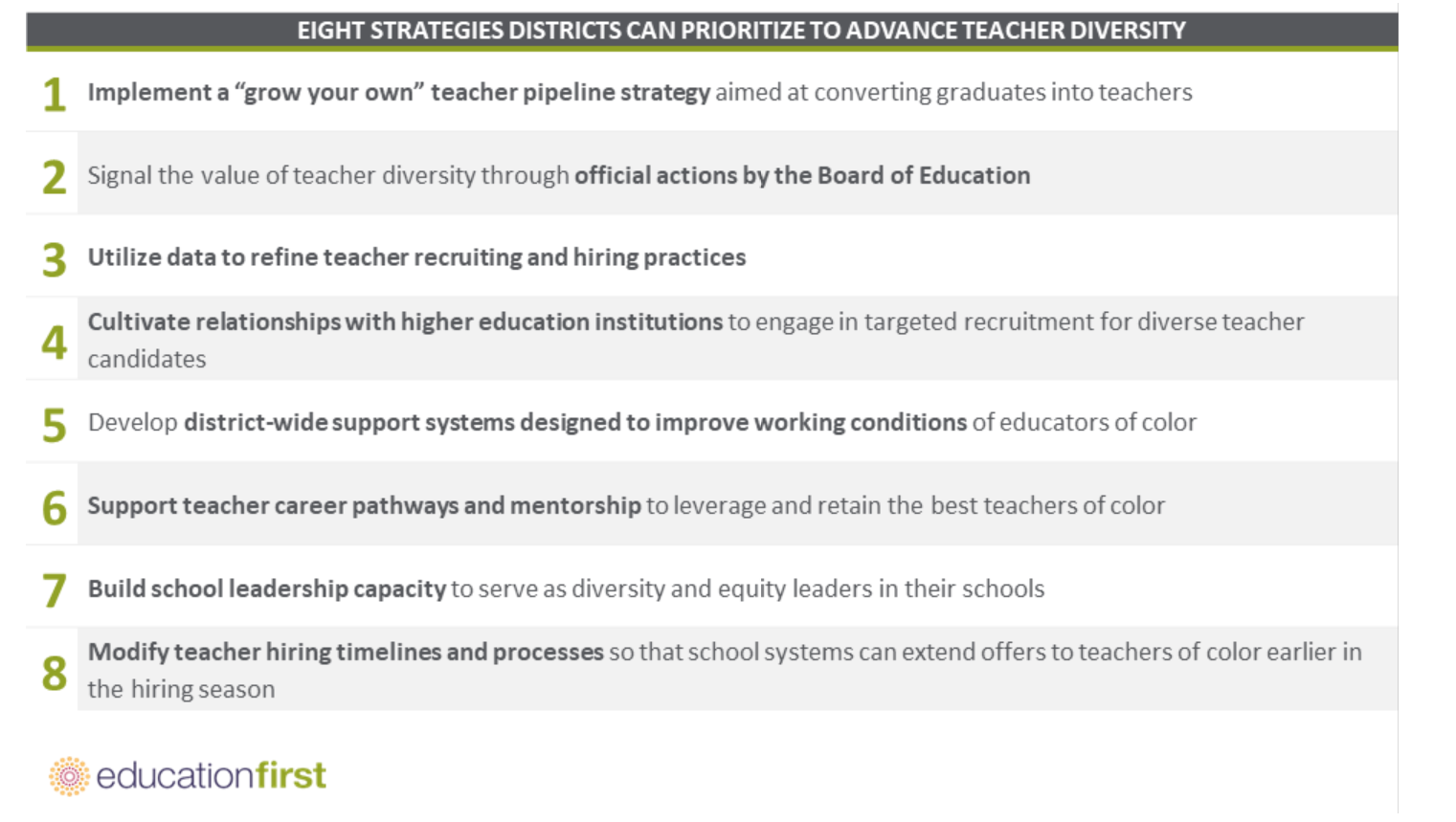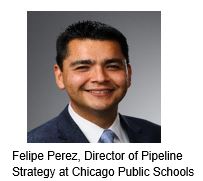As a parent of a school-aged child, I have spent most of this summer overwhelmed with worry about my son’s academic, mental and social-emotional well-being in the upcoming school year given school closures during the COVID-19 pandemic. In addition to safety concerns, I am worried about how my son’s needs will be met this year as our district struggles to offer equitable solutions for high-quality education in the face of this pandemic. But these concerns aren’t new for me: I’ve always had to worry about my child’s well-being in school simply because he is Black. The reality is that worrying about whether or not our students’ needs will be met is not new for those of us who parent or educate students of color. But what if districts could position themselves to address those concerns? What if they could close widening equity gaps due to the pandemic by simply increasing their focus on recruiting, preparing and retaining more Black and Brown teachers?
Earlier this week Dr. Cassandra Herring wrote in an op-ed, “But in its focus on predicting and thinking big about what the so-called new normal of our education system can and should look like…little, though, has been said about how we can strengthen and diversify our teacher workforce so that it is better constituted and equipped to provide inclusive instruction consistently and universally.” To be sure, districts face challenges when it comes to recruiting and retaining Black and Brown teachers. Teacher preparation programs are seeing declining enrollment and often offer inadequate supports. Black and Brown teachers often experience challenging teaching assignments and lack a supportive environment. However, research shows that students of color who have an educator of color at least once have an increased likelihood for academic success. Research also shows that teachers of color help close gaps for students of color and are highly rated by students of all races. Since teachers of color make up only about 18 percent of the teaching workforce at a time when students of color make up more than half of the students in America’s public schools, district leaders must make teacher diversity a priority.
Here at Education First, we’re working closely with districts, teacher preparation programs, states and foundations to help them figure out how to increase teacher diversity. In our first Spotlight on Teacher Diversity blog, we highlighted eight strategies state education leaders can implement to prioritize a focus on teacher diversity which was informed by our national landscape scan on teacher diversity policies and extensive interviews. District leaders too have a role to play; when they implement strategies like those below, districts have found success in advancing teacher diversity.

Chicago Public Schools (CPS) has implemented a multi-pronged approach to diversifying its teacher workforce and is making significant progress. I sat down with Felipe Perez, Director of Pipeline Diversity at CPS, to talk about why investing in a “Homegrown Teacher” strategy is a game changer. The “Homegrown Teacher” strategy, which is also known as a “grow your own” strategy, is centered on partnerships that help recruit and prepare community members (e.g., parents, paraeducators, uncertified school staff, middle/high school students) to enter the teaching profession and teach in their community. Perez says the “Homegrown Teacher” strategy is one of CPS’ “big bets” for addressing teacher diversity. Even now, in the midst of the pandemic, there are four ways that CPS is continuing to deepen its pipeline of teachers of color:
Diversity at CPS, to talk about why investing in a “Homegrown Teacher” strategy is a game changer. The “Homegrown Teacher” strategy, which is also known as a “grow your own” strategy, is centered on partnerships that help recruit and prepare community members (e.g., parents, paraeducators, uncertified school staff, middle/high school students) to enter the teaching profession and teach in their community. Perez says the “Homegrown Teacher” strategy is one of CPS’ “big bets” for addressing teacher diversity. Even now, in the midst of the pandemic, there are four ways that CPS is continuing to deepen its pipeline of teachers of color:
Understand what it would take to help people of color who wish they could be teachers achieve their dream. Perez says, “We have passionate and talented people of color in Chicago who dream of becoming teachers. We realized our work was about getting a better understanding of their obstacles—financial barriers, family commitments, test taking challenges—and determining how we can help them overcome those obstacles.” This focus has resulted in growing demand for its residency programs. The residency cohorts have consisted of 70–80 percent residents of color from its inception and has expanded from 25 to 125 residents over the past three years. Based on this success, CPS’ next focus is on supporting the thousands of current high school students who’ve expressed an interest in teaching.
Use recruiters as “candidate advocates” who find candidates, encourage them to apply, and shepherd them through the application process. “Candidate advocates” act as a support network for people who dream of teaching but have apprehensions and face challenges. They provide guidance on making up specific undergraduate course credits, getting access to test prep and moving through the application process. They also help connect opportunities at the district to interest from community members, especially those who might have not seen teaching as a goal within reach. Perez says this approach had an immediate impact on the teaching workforce and plans to apply this same asset-based approach to teacher pipeline efforts in high schools and with recent graduates.
Remember the critical role schools and teachers of color play in their communities as the country faces the current challenges of COVID-19 and wrestles with confronting racial injustice. “The empathy that a teacher [of color] who has walked a mile in a student’s shoes or lives in their community or has the same interaction with the police…it’s so powerful in the ability to reach these young people who really need us. Teachers of color engage with our students the way they need to be engaged,” Perez said.
Partner with education preparation programs, nonprofits and the state education agency to implement policies and programs that will identify and support Black and Brown teachers. CPS is working closely with several higher education partners, nonprofits such as Profound Gentlemen and its state education agency to implement its “Homegrown Teacher” strategy. This strategy requires a collective effort and these partnerships deepen its capacity to cultivate and support teacher candidates and teachers of color.
Education First is committed to supporting districts like CPS with efforts to prioritize big bets for getting and keeping more teachers of color in classrooms. Investing in recruiting, preparing and retaining teachers of color must be a prioritized strategy to improve equitable educational outcomes as districts restart school and rebuild during the COVID-19 pandemic.
Check out our Educator Diversity page to learn more about our work. And stay tuned for more spotlights on teacher diversity which will feature perspectives from state, nonprofit and philanthropic leaders.

